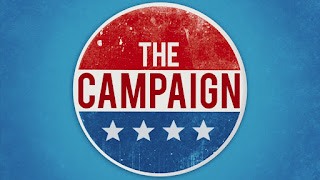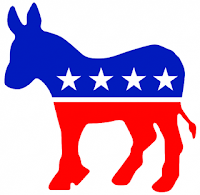NATIONAL VIETNAM WAR VETERANS DAY – March 29
 |
| THE CAMPAIGN |
RNC Rakes In Cash in February Thanks to Expensive Fundraising Push
The Republican National Committee pulled in a huge haul last month, raising $14.6 million, the vast majority of which, nearly $9 million, came from donors who gave less than $200, according to a new FEC filing.
It was the RNC’s best February for fundraising since 2004, and its best election off-year February ever.
The committee’s net income for the month, while still significant, was far smaller—at just $2.3 million, indicating that the RNC is pouring money into fundraising early in the cycle in the hopes of building a self-sustaining finance infrastructure heading into President Trump’s re-election contest. Simply put, in February, the RNC spent a lot of money to make a lot of money.
The committee reported paying $3 million to Trump campaign manager Brad Parscale’s digital firm for “fundraising services.” It spent nearly $4 million on direct-mail-related expenses such as postage and mail production, about $750,000 on telemarketing, $180,000 on acquiring email lists, and $113,000 buying “mementos” for donors. All told, that’s about $8 million, or more than half of the committee’s actual fundraising haul.
It’s a high cost for donor acquisition in the near term, but the RNC and the Trump campaign likely hope that this push to raise early small-dollar donations will establish a baseline of grassroots financial support going forward, particularly in the form of recurring contributions.
A product of this strategy has been the explosion of early Trump campaign Facebook ads noted this week by Axios, which reported that the campaign has spent more advertising on the social-media platform than all potential Democratic challengers combined.
There are plenty of deep pockets on the other side, though, and they’re going after the precise demographics that the RNC and the Trump campaign likely hope will provide the grassroots support it needs. On Thursday, Democratic super PAC American Bridge announced a $50 million paid-advertising campaign targeting Trump’s “core supporters”: white working-class voters in the Midwest. And the day before, Priorities USA, another Democratic super PAC,unveiled a $100 million campaign aimed at just Florida, Michigan, Pennsylvania and Wisconsin. [Pay Dirt, March 21, 2019]
PORTSMOUTH, N.H. — Beto O’Rourke campaigned for the first time in New Hampshire this week, and the first-in-the-nation primary hasn’t seen anything like it. In less than 48 hours, O’Rourke held at least 10 events and took hundreds of questions from fans, critics, and the media.
When most candidates or potential candidates come to Iowa or New Hampshire, they typically make a couple stops at either a big party dinner, college campus, political rally or house party. Not Beto: His style, much like how he campaigned for Senate in Texas, is akin to political flash mob.
Through email and social media, the campaign announces they are showing up at a small restaurant or a student union. There are no volunteers directing people where to go or how to sign up as supporters. Rarely does a local pol introduce O’Rourke, and the campaign doesn’t play campaign theme music to pump up the crowd. There’s no campaign signs or podiums. Stop me if you’ve heard this one before, but the candidate has been known to jump on a table to talk to the crowd.
It’s the most modern and old-fashioned New Hampshire campaign all at the same time. Here are four takeaways from O’Rourke’s visit to the state this week:
The campaign’s social media savvy is unprecedented
This cycle, campaign operations are on the prowl for digital content with the candidate aimed at a viral moment that can bring in low dollar contributions. For example, Senator Cory Booker will happily woo local activists in a private meeting, but he’d much prefer they post video about their meeting to their social media feeds.
Now consider how O’Rourke constructed his public events in New Hampshire: Each stop is intended to be three social media events in one.
In Portsmouth and Manchester on Thursday, O’Rourke picked small, popular restaurantsdowntown and near a parking garage. Even though 100 people showed up to both events — about the same crowd size as for other candidates at similar stops— there wasn’t enough room to let everyone inside.
Outside, O’Rourke gave roughly five minutes of remarks — just long enough for everyone to whip out their phones and take a picture of him, displaying a moment that appeared buzzworthy and like he was on the hustings. When O’Rourke went inside for a longer speech and question session, the different — yet still informal — backdrop provided another opportunity for social media photos.
Finally, it’s time for selfies. Other candidates, like Senators Elizabeth Warren, are also pros at reserving time for such shots with supporters. But with O’Rourke, the selfie line feels like the main event. In Portsmouth the line was organized quickly by staff and stretched past the full length of the building outside.
His arrival is part-Obama, part-Trump
No doubt about it: O’Rourke is a celebrity. A group of high school girls in Manchester told me that they skipped school and created handmade signs to meet the pop star, er, former congressman and one-time El Paso councilman.
The buzz surrounding his first trip to New Hampshire resembled those of Barack Obama and Donald Trump. People wanted to see the celebrity — and, as a result, guests appear more interested in getting a picture with O’Rourke and watching him speak, perhaps more than listening to what he said.
In Manchester, the flash mob basically shut down a one-way street for several minutes. The last time a candidate shut down a New Hampshire street like that this early in the primary? Donald Trump. [Ground Game, March 22, 2019]
 |
| 2020 PRESIDENTIAL CANDIDATES |
 |
| BANNON |
 |
| DEMOCRATIC PARTY |
|
|
|
|
 |
| THE VOTE |
 |
| VATICAN CITY |
 |
| DAILY SPECIALS |
A Veteran Returns to Vietnam, Photographs the Country and Comes to Peace With His Wartime Experience
NOTE: I have no official connection to any organization from which information is shared.. Occasionally, I post informational material and/or an opportunity to donate or join as a "community service" announcement. These again are shared for their varying perspectives.
Any commercial or business interest information shared is purely informational, not an endorsement. I have no connection with any such commercial or business interest.
Any books listed are random or topic-related to something else in the post. Think of these as a "library bookshelf" to browse. They are shared for informational or entertainment value only, not as being recommended.
 Amid trips to early primary states, Mayor Bill de Blasio and First Lady Chirlane McCray managed to work in a visit to Florida for the Boston Red Sox's Spring Training. (Gerald Herbert/AP)
Amid trips to early primary states, Mayor Bill de Blasio and First Lady Chirlane McCray managed to work in a visit to Florida for the Boston Red Sox's Spring Training. (Gerald Herbert/AP)




Comments
Post a Comment